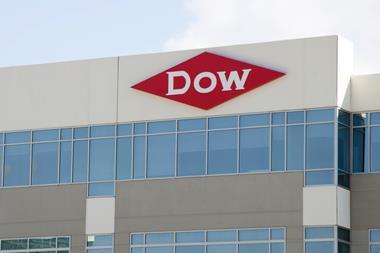A current topic of hot debate in the medical field is the efficacy of cholesterol-lowering drugs in prolonging life. Lalitha Gopinath looks at the drugs available, and the evidence put forward to demonstrate their effectiveness.
Britain has one of the highest rates of heart disease in the world; every year over 300 000 people suffer from heart attacks and around 170 000 people die from an attack. One of several factors linked with increased risk of heart disease is high blood levels of cholesterol, a fatty substance which forms part of a biological group called sterols.
Until recently, drug therapy for people with high blood cholesterol levels has been a subject of controversy in the medical field, mainly because clinical trials have failed to show sufficient evidence of improved survival after taking the drugs. In fact, some reviews of clinical studies on cholesterol-lowering drugs suggest that the survival rate (in terms of gross numbers) is not improved because the observed reduction of deaths from coronary heart disease (CHD) is offset by an apparent increase in non-cardiac mortality, including cancer and violent deaths.
During the past few years, medical journals have published epidemiological studies (long term studies comparing different population groups) that indicate that certain cholesterol lowering drugs, particularly the newest class called statins, do in fact have beneficial effects in terms of prolonging life and reducing the chance of further secondary attacks. The latest of these studies, the Cholesterol and Recurrent Events (Care) study, was published in the New England Journal of Medicine only last month. It was carried out by US researchers from Harvard Medical School who found that the Bristol-Myers Squibb (BMS) drug pravastatin reduced the chance of a second heart attack for CHD patients with normal cholesterol levels by 25 per cent.
Cholesterol plays several vital roles in the body. It is a structural component of all cell membranes, and is necessary for the formation of certain hormones, vitamin D and bile acids (which solubilise fats in the small intestine). However, the role that draws more public attention is its part in the formation of atheromatous lesions in arterial walls, which constitute an underlying cause of coronary heart disease. Atheromas are the blockages that build up over a number of years in blood vessels, consisting of a variable combination of lipids (fats), complex carbohydrates, blood and blood products, fibrous tissue and calcium deposits. These blockages may eventually interfere with blood circulation, leading to CHD. High blood cholesterol constitutes a small but significant part of the pathological process behind atheroma formation in the blood vessels (atherosclerosis).
Cholesterol in the blood
When the levels of cholesterol in the blood are too high (6.5 mmol l-1 or higher), the condition is called hypercholesterolaemia. Doctors use cholesterol-lowering drugs to treat hypercholesterolaemia when dietary modification has failed to bring the patient’s level back down to normal.Because cholesterol (like all other lipids) is insoluble in water, it is carried in the blood bound to a protein structure, forming molecules called lipoproteins. The two types of lipoprotein that are particularly important in atherosclerosis and CHD are low density lipoproteins (LDL) and high density lipoproteins (HDL). LDL transports cholesterol from the liver (where cholesterol is synthesised) to peripheral tissues of the body, whereas HDL removes excess cholesterol from peripheral tissues, taking it back to the liver to be broken down. Epidemiological studies have associated higher levels of LDL-cholesterol and lower levels of HDL-cholesterol in the blood with increased risk of CHD, which is why LDL-cholesterol is also known as ’bad’ cholesterol.
The current armoury of cholesterol-lowering drugs include statins, nicotinic acid (niacin) derivatives, bile acid sequestrants (resins) and fibrates. Table 1 shows various drugs on the market. Statins, niacin derivatives and resins are more effective in lowering LDL cholesterol than fibrates, but fibrates increase HDL cholesterol to a greater extent than the others. Statins, being the most recently developed of these drugs, present the greatest market opportunity in the industry and represent an important step forward in managing high blood cholesterol levels. They have recently been at the forefront of debate in the medical field, due to emerging evidence from studies which suggests that they do improve survival rates. This evidence has spurred their sales to among the fastest growing drugs in the world.
Table 1. Cholesterol lowering drugs available in the UK
| Brand (generic) | Company | Effect |
| Statins | Cholesterol-lowering | |
| Lescol (fluvastatin) | Sandoz | |
| Lipostat (pravastatin) | Bristol-Myers Squibb | |
| Zocor (simvastatin) | Merck Sharp & Dohme | |
| Fibrates | Cholesterol- and triglyceride-lowering | |
| Atromid (clofibrate) | Zeneca | |
| Bezalip mono (bezafibrate) | Bristol-Myers Squibb | |
| Lipantil micro (fenofibrate) | Fournier | |
| Lopid (gemfibrozil) | Parke-Davis | |
| Modalim (ciprofibrate) | Sanofi Winthrop | |
| Bile acid sequestrants | Cholesterol-lowering | |
| Colestid (colestipol) | Pharmacia and Upjohn | |
| Questran (cholesteramine) | Bristol-Myers Squibb | |
| Nicotinic acid derivative | Cholesterol- and triglyceride-lowering | |
| Olbetam (acipimax) | Pharmacia and Upjohn |
The first statin to be introduced in the UK was Zocor (simvastatin), which was launched in May 1989 by Merck Sharp and Dohme (MSD). This was followed by Lipostat (pravastatin, or pravachol in the US) in September 1990 from BMS. In January 1994, Sandoz launched Lescol (fluvastatin), which is the first totally synthetic HMG-CoA reductase inhibitor. Lovastatin (Mevacor), is also a Merck product, but it is not marketed in the UK. Lovastatin is produced from the fungus Aspergillus terreus and simvastatin and pravastatin are produced by chemical modifications of lovastatin. Box 2 shows the chemical structures of fluvastatin, pravastatin and simvastatin, and explains how statins work to lower blood cholesterol levels. Parke Davis, a subsidiary of the US company Warner Lambert, has just entered into a worldwide promotion agreement with Pfizer for the newly-developed drug atorvastatin. Bayer’s drug cerivastatin has been in development for a number of years and is currently awaiting registration.
Evidence for effectiveness
Two major studies carried out before the Care study (see above) have provoked a lot of interest over the past two years. The Scandinavian Simvastatin Survival Study (4S) was published in The Lancet in November 1994, and showed that long-term treatment with MSD’s simvastatin improved overall survival rates in patients with CHD. The study, which was sponsored by MSD, was carried out by five independent cardiologists over a period of five years and covered over 4000 patients. Risk of death was reduced by 30 per cent, and risk of death from CHD fell by 42 per cent. There was no suggestion of an increase in non-CHD mortality due to long term use of the drug.
A year later, the N. Eng. J. of Med., published the results of the West of Scotland Coronary Prevention Study (Woscops), another epidemiological study showing that BMS’s pravastatin reduced the risk of a heart attack by 31 per cent and reduced the risk of death from all causes by 22 per cent in men who had high cholesterol levels but who had never had a heart attack. The Care study was significant in that positive results were obtained in patients with average cholesterol levels, who under present medical guidelines would not receive treatment. According to Professor John McMurray, consultant cardiologist at the Western Royal Infirmary in Glasgow, this means that most of Britain’s 1.4m heart attack patients ought to be eligible for cholesterol-lowering drug treatment. The Care study is also significant because it included women as subjects. Female patients taking pravastatin reduced their risk of having a second coronary event by 46 per cent. The likelihood of heart surgery and the risk of stroke was also reduced.
These studies are especially significant in the current climate, in which the government and the National Health Service places a lot of emphasis on evidence-based treatment. The combined effect of the results from the 4S, Woscops and Care studies are likely to prove persuasive in the medical community, perhaps convincing the more sceptical of the effectiveness of statins in combating CHD. Although the British Heart Foundation is still keen to stress that cholesterol levels are only one aspect of the several risk factors contributing to heart disease, doctors may well turn to prescribing statins more readily.
In a recent article in The Lancet (1996, 348, 1079) researchers from Cork have stated that the clinical benefit observed in the 4S and Wocops studies is not solely attributable to reduced cholesterol levels, but that statins affect other blood components involved in the pathological processes of CHD.
One problem that the NHS faces is that the drugs are relatively expensive. At present, only a small percentage of people who would be expected to benefit from their use are prescribed cholesterol-lowering drugs by doctors. The industry sees cholesterol-lowering drugs as a hugely underdeveloped market worldwide, although in the rest of Europe and the US the market is slightly more developed. The government and NHS pharmaceutical advisers are advising GPs to follow the evidence. But the potential cost of prescribing is enormous. If patterns in current medical management of CHD or raised cholesterol levels change, so that doctors act on the evidence and prescribe cholesterol-lowering drugs more freely, there would be a huge consequence to the NHS drug budget. In trying to meet the demands from the government to reduce CHD (via dietary changes or drug therapy) on the one hand, and on the other hand trying to reduce costs, doctors are faced with a serious dilemma. Whether this demand means that the drug prices will come down remains to be seen.
Reducing the demand for heart surgery or the need for hospitalisation following secondary heart attacks would have a significant impact on hospital costs. According to BMS, the cost per patient of a year’s treatment with Lipostat would be approximately ?370. The average daily cost for hospitalisation of each heart attack patient is ?305. The results from the Care study have implications in reducing health service costs, due to the reduced need for surgical intervention and lower levels of hospital admission.
A growing market
Table 2 shows the worldwide market distribution of statins in 1995. At the current rate of growth, the worldwide lipid-lowering drug market (including blood cholesterols and triglycerides) is expected to approach $6000m in 1996, and to exceed $7000m in 1998. In 1995, statins accounted for 75 per cent of the market. By continuing to fuel the accelerating market, it is thought that statins will contribute to 85 per cent of the lipid-lowering market by 1998.
Table 2. Worldwide sales of statins 1995
| Generic | Brand | Company | Sales $m |
| Simvastatin | Zocor | MSD | 1935 |
| Lovastatin | Mevacor | MSD | 1260 |
| Pravastatin | Mevalotin | Sankyo | 1233 |
| Pravastatin | Pravachol | BMS | 775 |
| Simvastatin | Lipovas | Banyu | 450 |
| Fluvastatin | Lescol | Sandoz | 215 |
| Total | 5868 |
Source: Datamonitor
According to research by Warner Lambert in the US, in clinical practice between 50 and 90 per cent of patients prescribed statins remain on the starting dose (10 mg daily for Lipostat and Zocor, and 20 mg daily for Lescol, which is lower than the doses used in the epidemiological studies mentioned above), resulting in only a 15 to 25 per cent lowering of LDL-cholesterol. This means that the vast majority of patients don’t reach the suggested LDL-cholesterol target values based on their risk factors. Patients who are prescribed cholesterol-lowering drugs have reached the stage in their treatment where dietary modification has not worked, and are likely to see drug therapy as a much more vigorous form of treatment. Doctors are perhaps reluctant to prescribe higher doses of statins in order to bring down cholesterol levels to target values - possibly because they do not yet feel sufficiently assured or because of a lack of specific guidelines in drug handbooks relating to the use of higher doses. The newly developed atorvastatin is a more potent cholesterol-lowering agent and a 10 mg dose level apparently leads to a 40 per cent reduction in LDL-cholesterol. Warner Lambert maintains that the side-effects will remain minimal, and that they are less than the side-effects suffered with resins and nicotinic acid. In clinical trials, atorvastatin has brought cholesterol levels down in patients with severe genetic hypercholesterolaemia, where other statins have failed to show significant efficacy. It has also been shown to be effective in lowering blood triglycerides (another type of lipid). Atorvastatin is thought to work by the unique mechanism of turning off the input of cholesterol and triglyeride into the blood, and, like other statins, increasing the removal of cholesterol from the blood.
Future leads
An area which is yet to result in a marketed product for lowering cholesterol is to use inhibitors of the enzyme squalene synthase - another enzyme involved in synthesising cholesterol. Researchers in Japan are looking at the compound J-104 118, which was discovered by the chemical modification of another SQS inhibitor from Merck Research Laboratories, L-592 901. The researchers predict that J-104 118 or its related compounds will mark a new era in using SQS inhibitors as cholesterol lowering agents.
Source: Chemistry in Britain
1. What is cholesterol?
Cholesterol is a fatty substance (lipid). It forms part of a group of biological substances called sterols, which are solid alcohols that, like all alcohols, can form esters with fatty acids. In plasma (a component of blood), most of the cholesterol is esterified, whereas in cells it is free.
2. How statins work
Statins work by inhibiting the enzyme 3-hydroxy-3-methylglutaryl coenzyme A (HMG-CoA) reductase, which is a major enzyme involved in synthesising cholesterol in the liver. This results in reduced cholesterol levels in liver cells, which then meet their cholesterol requirements by taking up cholesterol circulating in the blood, via a protein on the liver cell surface called an LDL receptor. LDL receptors break down the circulating cholesterol, which results in reduced levels of LDL cholesterol in the blood. Evidence exists to suggest that statins increase the number of liver cell LDL receptors.






No comments yet